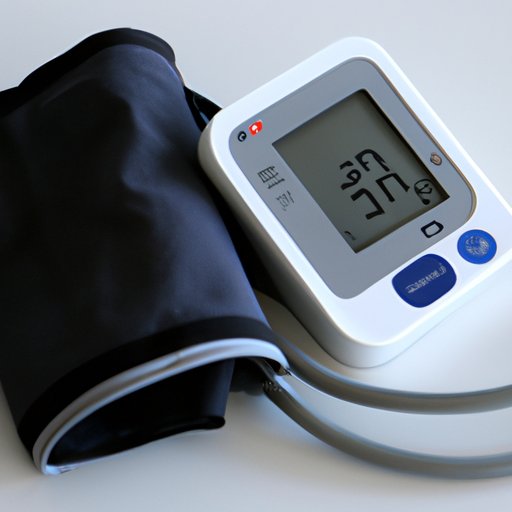
I. Introduction
Have you ever wondered how to use a blood pressure cuff? Measuring blood pressure accurately is important for maintaining good health and identifying potential risks. Knowing how to properly use a blood pressure cuff can save you time and money by reducing the need for frequent doctor visits. This article will provide you with a comprehensive guide on how to measure blood pressure using a blood pressure cuff, along with additional tips for ensuring accuracy and avoiding common mistakes.
II. Step-by-step guide
Before we start, make sure you have a blood pressure cuff, a stethoscope, and a quiet space to measure your blood pressure. Here are the steps for measuring blood pressure using a cuff:
a. Prepare the cuff and stethoscope
Wrap the cuff around your upper arm, placing it just above the elbow. Ensure that the cuff is snug but not too tight. Place the stethoscope in your ears and rest the diaphragm on the inside of your elbow, just above the brachial artery.
b. Locate the brachial artery
To locate the brachial artery, gently but firmly press your fingertips against the inside of your elbow, just below the cuff. You should be able to feel a pulse.
c. Inflate the cuff
Squeeze the bulb or press the button on the cuff to inflate it. Continue inflating until the gauge reads 180-200mmHg or until the pulse in your wrist disappears.
d. Slowly release the pressure
Slowly release the pressure on the cuff by turning the valve or releasing the button. As you release the pressure, listen for the first heartbeat. This is known as the systolic pressure, which is the higher number you will record.
e. Record the measurements
Note the reading on the gauge when you hear the first heartbeat and when the sound disappears. This is known as the diastolic pressure, which is the lower number you will record. Record both numbers in millimeters of mercury (mmHg), with the systolic pressure first and the diastolic pressure second.
It’s important to take your blood pressure at the same time every day to ensure accurate readings. Additionally, make sure you are sitting in a chair with your back supported and feet flat on the ground. Avoid smoking or drinking caffeine for at least 30 minutes prior to taking your blood pressure as it can affect the measurements.
III. Video tutorial
To complement the step-by-step guide, we have created a video tutorial demonstrating how to use a blood pressure cuff. This video tutorial will help you understand the process in a clear and engaging way, emphasizing the proper technique and highlighting important tips and warnings.
IV. Infographic
For those who prefer visual aids, we have also created an infographic that summarizes the process of measuring blood pressure using a cuff. This clear and simple graphic helps to convey the key steps and important information, emphasizing any important tips or warnings.
V. Importance of measuring blood pressure
Measuring blood pressure is important because high blood pressure can lead to serious health problems such as heart disease, stroke, and kidney failure. Accurate measurement can help to identify potential risks and allow for early prevention or treatment. It’s important to measure blood pressure accurately to ensure that you get the correct diagnosis and treatment.
Some helpful tips for accurate measurement include taking your blood pressure at the same time every day, avoiding smoking and caffeine prior to measurement, and wearing comfortable, loose-fitting clothing. Always let your healthcare provider know if you have a history of high blood pressure or any other risk factors so they can properly advise you.
VI. Common mistakes to avoid
There are several common mistakes people make when measuring blood pressure using a cuff. These include not placing the cuff in the correct location, not inflating the cuff enough, and not releasing the pressure slowly enough. These mistakes can result in inaccurate readings, which can be detrimental to your health.
To avoid these mistakes, make sure to place the cuff in the correct location, inflate the cuff until the gauge reads 180-200mmHg or until the pulse in your wrist disappears, and release the pressure slowly so you can accurately detect the systolic and diastolic pressures.
VII. Tips for accuracy
Here are some additional tips to help ensure accuracy when measuring your blood pressure using a cuff:
- Measure your blood pressure in a quiet space where you can relax and breathe deeply
- Avoid talking while taking your blood pressure
- Rest for at least five minutes before taking your blood pressure
- Avoid crossing your legs while taking your blood pressure
- Take your blood pressure on both arms and take the average of both readings
VIII. Conclusion
Measuring blood pressure accurately is important for maintaining good health and identifying potential risks. With this comprehensive guide, you now know how to properly use a blood pressure cuff and can avoid common mistakes to ensure your readings are accurate. Remember to take your blood pressure at the same time every day and follow the tips provided to ensure accurate measurements.





